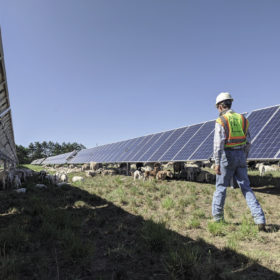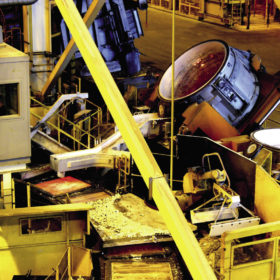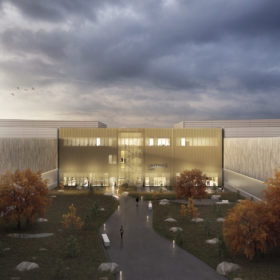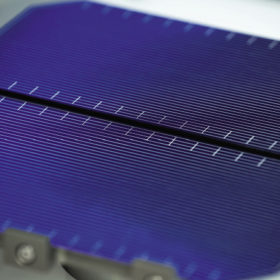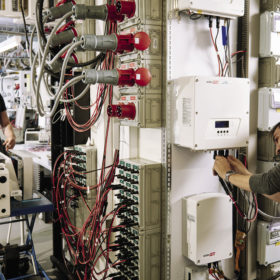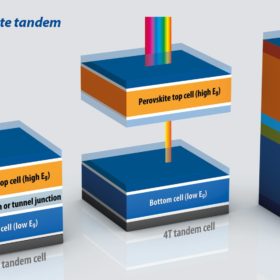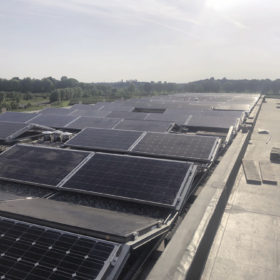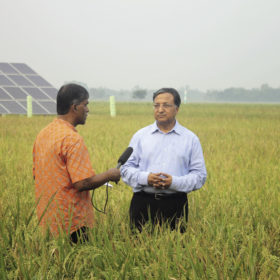The ground beneath
A number of drivers are highlighting the importance of vegetation management in utility-scale solar projects, from coupling with agriculture to the significance of pollinators, as well as the related permitting and O&M benefits. Tom Karas of Minnesota Native Landscapes sets out why awareness of comprehensive vegetation management is of growing importance in the solar sector.
Solar needs aluminum, but it has a carbon problem
Few doubt that aluminum frames will be a part of the solar module for some time to come. And with PV manufacturing continuing to scale, the carbon footprint of this versatile metal may prove a sustainability challenge.
‘Circular economy is the most pressing challenge’
This year has been extraordinary for businesses. The Covid-19 pandemic has shaken global markets, forcing many companies to rethink their daily operations. Despite these challenging times, it is crucial to keep environmental goals in focus – indeed, it can be argued they are more pertinent than ever. CEO Jürgen Reinert recently spoke to pv magazine about the progress inverter manufacturer SMA, a partner of the UP initiative, has made reducing its carbon footprint and use of toxic substances. It is also focusing on circular economy principles, despite the tough times.
Is fair lithium from Chile possible?
Batteries, and the raw materials that make them, are a frequent target of public criticism. The high water consumption required for lithium extraction is speeding up the desertification process around the salt lakes of Latin America’s so-called “lithium triangle”, for example. The mining debate highlights general problems with the extraction of raw materials, including copper, crude oil, and lithium, but international companies can still influence extraction methods – and there are plenty of different approaches.
Building Europe’s battery business
In just three years, Northvolt has progressed from a startup to become Europe’s response to the Asian dominance of global battery manufacturing. pv magazine investigates why Northvolt is setting up units in Sweden, Germany, and Poland, what the firm’s goals are, and how it is attempting to achieve them.
Laser focused
Solar manufacturing’s recent move toward larger wafer/cells throws into focus the need for effective cell-cutting techniques to handle the processing of these cells into half cut or even smaller formats. pv magazine looks at the landscape for cell cutting, as the technology reaches maturity and moves into the mainstream of cell/module production.
Made in Israel
A reformed electricity market, officials who are supportive of PV’s new competitive position, and growing renewable energy ambitions are driving significant growth in Israel’s solar market this year. And with its homegrown hero in the background, solutions for the country to become a clean energy leader could already be in place.
Perovskites continue to clear hurdles
As laboratory world records attest, perovskite PV continues to develop at pace, and Helmholtz-Zentrum Berlin (HZB) is responsible for many such records. Rutger Schlatmann, head of the renewable division at HZB, sets out how, beyond efficiency, a number of key obstacles to commercialization are being steadily overcome.
‘We will need a solution’
The Circusol project was established in August 2018 with the aim of fostering business models that demonstrate the circular economy within the solar industry. Tom Rommens from the Flemish sustainability research group Vito serves as the Circusol coordinator. He reports that with a wave of PV products at end of life forming, Circusol’s five demonstration projects are providing insights into how circular-economy principles can be applied to PV.
Bangladesh’s renewables pioneer dreams of a ‘solar nation’
Dipal C Barua started installing rooftop solar systems in Bangladesh when the PV industry itself was in its infancy, with his company Grameen Shakti. Now heading up the Bright Green Energy Foundation, Barua installs small residential systems, streetlights, and irrigation pumps throughout rural Bangladesh under various government programs.
